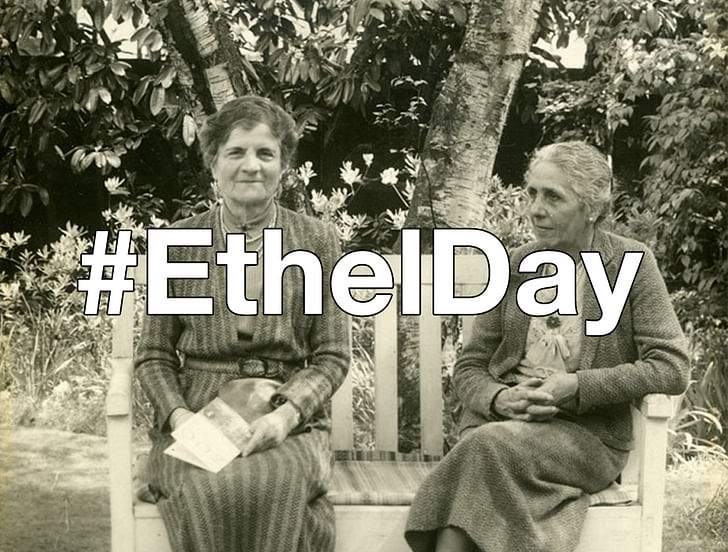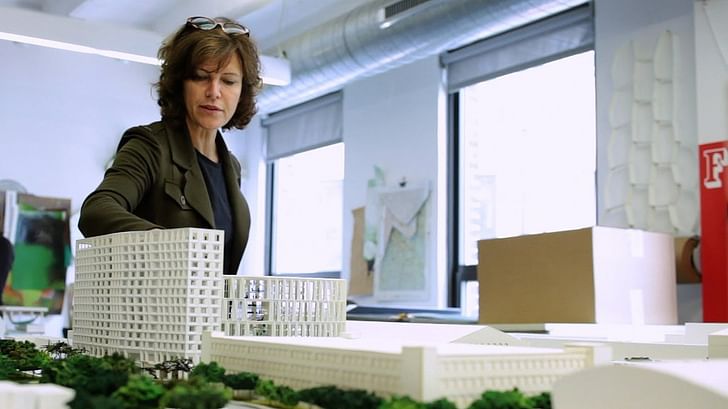

In 1898, Ethel Charles became the first woman to be admitted to the Royal Institute of British Architects (RIBA) and today RIBA is celebrating the trailblazer with a social media campaign marked by the hashtag #Ethelday.
Ethel’s route to qualifying as an architect was far from easy. She and her sister Bessie trained under Ernest George and Harold Peto for three years and attempted to continue their education but were denied entry at the Architectural Association School of Architecture. Ethel continued by completing university extension courses at the Bartlett School of Architecture but, although allowed entry, was barred from graduating. Upon passing RIBA examinations for associate membership, she faced much opposition, with members even issuing a statement, writing, ironically enough, that “it would be prejudicial to the interest of the institute to elect a lady member.” In the end, Charles was finally granted membership—51 voting in favor and 16 against—and her sister became the second female RIBA member two years later.
To honor her legacy, the social media campaign #Ethelday is meant to bring international attention to the incredible contributions made by women to the field and all are encouraged to share images, designs etc. of a woman architect they find inspiring. So, to mark the occasion, here’s a roundup of some past Archinect coverage of the role of women in the discipline:

CONTOURS: The Gender Gap in Top Management
"It is no wonder that women in the States comprise a mere 18% of management. To summarize, whatever profession we are discussing, there exist several corporate barriers that directly impact women’s career decisions, including whether they will have children or not."
Working Warrior: an interview with Katy Marks of Citizens Design Bureau
“Use their skills more effectively,” says Marks, “rather than say ‘she’s only working part time, therefore she can’t be the lead person,’ it actually puts you in a much better position to be more strategic, running a team who are doing things on the ground, dipping in and out on a strategic guiding way – experienced women are perfectly placed to play much more strategic leadership roles. I know so many women who are in their mid to late-30s having kids a bit later who are massively frustrated, because they know that they can play that kind of role but nobody else in the office sees that.”
What we can learn from Chicago's CARYATIDS, the feminist curatorial collective that fought sexism in architecture
"But no feminist group challenged the status quo as imaginatively as CARYATIDS, a little-known collective of designers founded twenty-five years ago in Chicago. On the occasion of the 2017 Chicago Architecture Biennial—which will reinterpret ideas from the past under the theme of Make New History—it’s worth looking back at how these hometown trailblazers set an unprecedented example for activism in design"

Between the home and the market: an interview with Christine Bjerke from Next Up: Floating Worlds
“For a large portion of these women, gaining financial freedom can be the only escape from oppressive situations like domestic violence, which is sadly a widespread problem in Japan. Through exploiting loopholes in the financial markets and adopting an anonymous role within a genderless system in constant flux, the women are creating both empowerment and anonymity at the same time,” Bjerke notes. “In their constant search for a potential higher return, the women are questioning the limitations of the home and the role of the housewife.”
'Working through architecture and its refusal': an interview with f-architecture from Next Up: Floating Worlds
"I would say that architecture as a profession, when it responds to politics and to the invocation of an f-word—feminism—has a tired diversity discourse that’s really based in representation. The easiest way to engage with the politics of the profession is to take a reading of the room and see how few women or people of color are in it and wonder why they’re not paid very well."
Decoding Gender Discrimination in Design with QSPACE
“The language behind HB2 and other bathroom bills defining gender as biological sex is putting transgender and gender non-conforming people into possibly violent situations,” Lauren Johnson, a co-founder of QSPACE, tells me over Skype. With their on-going project, Coded Plumbing, QSPACE juxtaposes the language of these bills with the language of building codes, plumbing codes and best-practice standards, finding that design regulations parallel the binarism of these laws and ordinances"

Xeno-Architecture: Radical Spatial Practice and the Politics of Alienation
"Rather than focusing on forms and looks, we aim to collect thoughts about new ways of approaching spatial practice: rather than translating a concept directly into a physical appearance, theory and practice are inherently intertwined in Perhaps it is high time for a xeno-architecture to match —thereby opening up lines of thoughts and experimentations that cannot (yet) be anticipated."
Falling through the sharing economy's looking glass—and into an ocean of unpaid, gendered, domestic labor
"Taste, that indeterminate and often elitist object, is said to be innate rather than learned. If, as Benjamin suggest, the 19th century bourgeois apartment was the opposite of the counting house, that is only because individuals, likely women and members of the working class, maintained its phantasmagorical allure. After all, it’s hard to dream of far-off lands when your armchair is covered in a pile of dirty laundry."
Screen/Print #41: "Family Planning" from Harvard Design Magazine
"Should I have kids? How many? Does he want to have kids? And when will it be too late to have another? Can we afford two? Do I have the stamina to nurse a child for a year and a half (pumping, pumping, pumping)? Will I be able to maintain my career? Will my partner be sexist when it comes to the needs of a small child and the associated housekeeping? What kind of world will we be bringing a child into? Aren’t there too many children in this world already? Will I become a slave to motherhood? How will I rear a child (in a decent school district!) given New York City’s “sky’s the limit” real estate market?!"
Check out our Proust Questionnaire's with three impressive female architects: Deborah Berke, Francince Houben, and Farshid Moussavi.
Learning from 'Learning from Las Vegas' with Denise Scott Brown, Part I: The Foundation, Part 2: The Padagogy, and Part 3: Research.
We also interviewed the 2016 AIA Gold Medal winner for the 39th episode of our podcast Archinect Sessions.
Listen to Amale Andraos discuss her book The Arab City.
Read our interview with Maryam Eskandari about the relationship between her Islamic faith and architectural practice.

Deborah Berke shares her vision as incoming dean at the Yale School of Architecture
Deans List: Monica Ponce de Leon of University of Michigan's Taubman College
Deans List: Amale Andraos of Columbia University's GSAPP
Dean's List: Kate Schwennsen's balancing act at Clemson University
The Deans List: Sarah Whiting of Rice University

Meet Dr. Sumaya Bint Sulaiman, Saudi Arabia's first female dean of a design college
Denise Scott Brown awarded the Jane Drew Prize
More Women joined the profession in 2015 than ever before
Blair Kamin's standout Chicago architects of 2016 are all female, "but that's incidental"
Why International Women's Day matters (for architects)
2014 AIA Gold Medal posthumously awarded to Julia Morgan, FAIA - the first female recipient
Diana Agrest gets profiled as one of NPR's "50 Great Teachers"
Zaha Hadid announced as winner of 2016 Royal Gold Medal
Yvonne Farrell + Shelley McNamara named 2017 Thomas Jefferson Foundation architecture medalists
Phyllis Lambert named as 2014 Golden Lion for Lifetime Achievement recipient
Mecanoo's Francine Houben named AJ Woman Architect of the Year 2014
No Comments
Block this user
Are you sure you want to block this user and hide all related comments throughout the site?
Archinect
This is your first comment on Archinect. Your comment will be visible once approved.